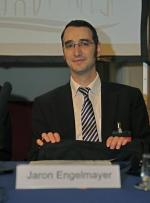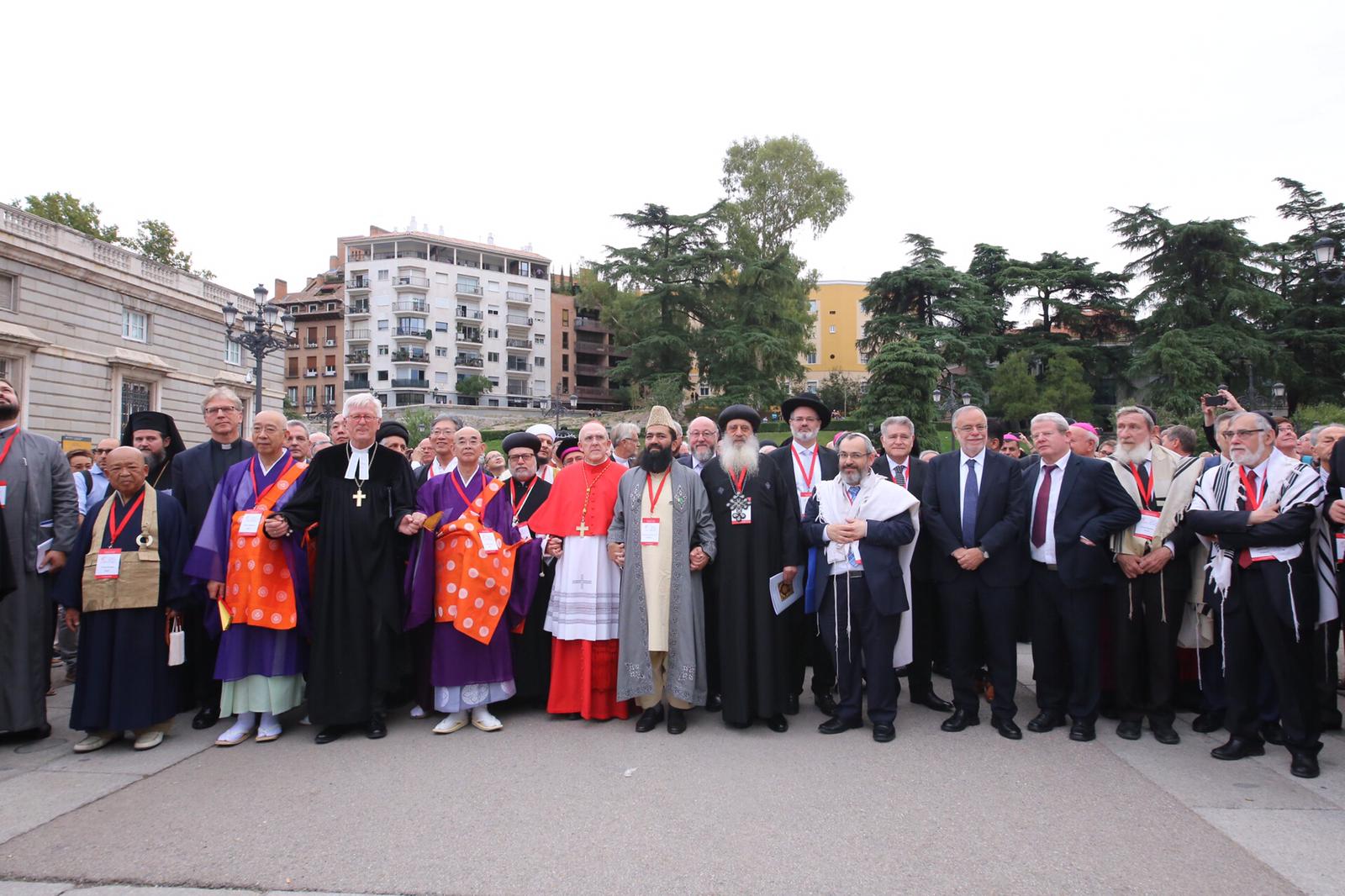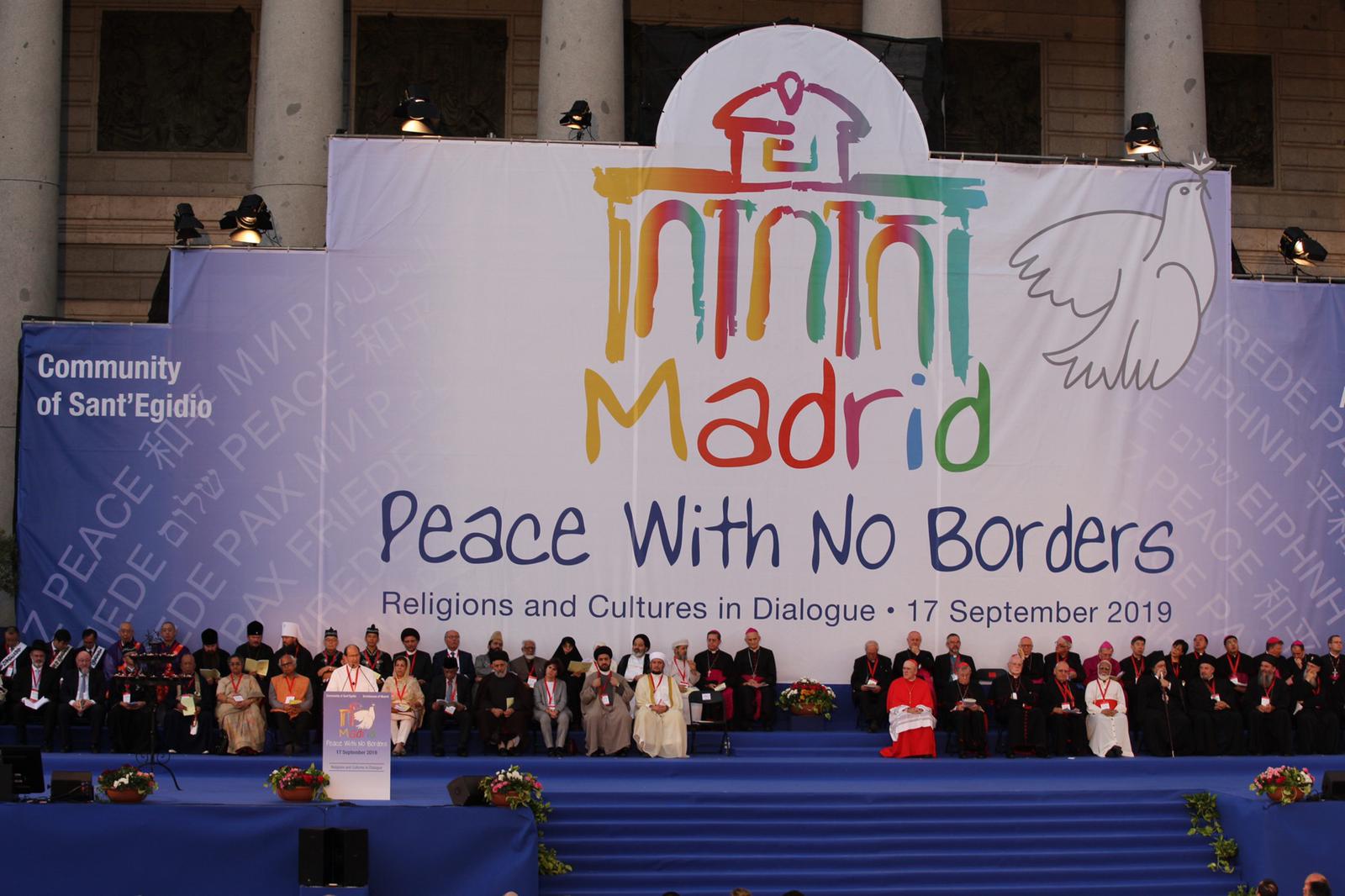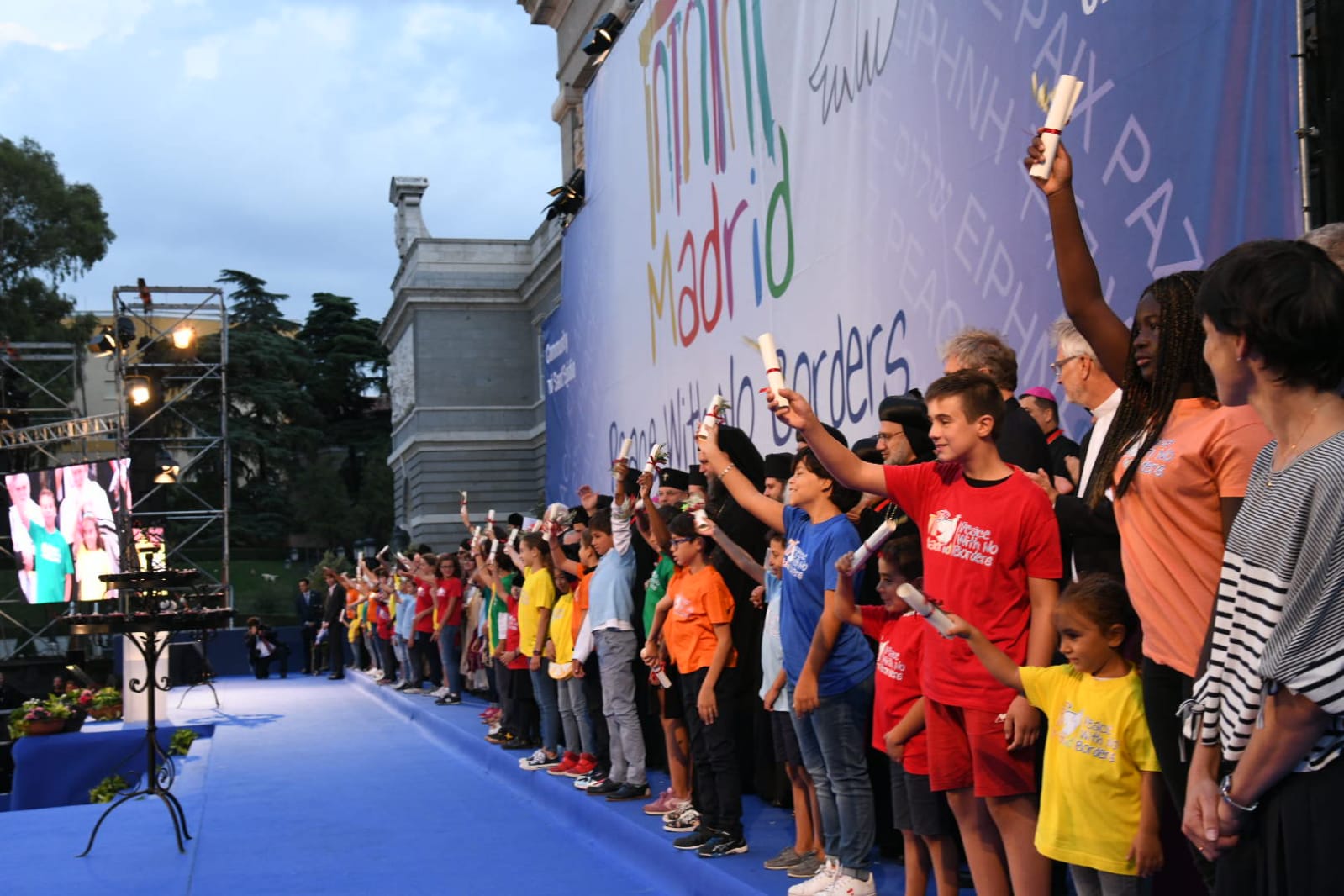
Distinguished participants of the panel, dear Ladies and Gentlemen,
Many thanks to the community of St. Egidio for inviting me to speak at this panel, it is a big honor for me!
My feeling says there is a common sense in this room that places of worship should be preserved and protected. But it is important to understand why so, and what happens if not. That is why I am going to focus on the following points out of the Jewish perspective:
The understanding of the holy places: of the Jewish Temple once and today, and of synagogues
What happens if such places are destroyed and how to refer to others worships places
The meaning of holy places for the Jewish people and religion
What do we need Places of Worship for?
When a young Jewish boy was first time taken by his father to the synagogue, he asked him: "Daddy, what is a synagogue?" His father answered: "This is a house of G'd." "But daddy, isn't G'd anywhere?" "That is right, son", replied the father after some thoughts, "but in this house He has His business."
Unlike this little son, we should try to develop a deeper understanding of the meaning of the Jewish worship places:
It was as early as when the Jewish people made it first steps after being redeemed from slavery out of Egypt, when the essential meaning of the Holy Temple at the holy site was mentioned explicitly and put as the ultimate goal of their destiny. After walking through the Red Sea and being saved from the Egyptians, Moses and the Israelites sang a song to G"d which we recite every morning in our daily prayer, where it says: "You will bring them (the Israelites) and plant them on the mountain of Your heritage… the Holy Temple, Lord, which Your hands established. The Lord will reign forever and all time" (Exodus 15, 16-18)
While wandering through the desert a Holy Temple was built in form of the tabernacle, but the determined place "on the mountain of Your heritage" mentioned above was already well known, since important things happened there in earlier times, as for example the binding of Isaak by Abraham: it is the Temple mountain in Jerusalem (Maimonides, Laws of the "Chosen House" 1, 2). So 3000 years ago King David bought this place, and declared Jerusalem to be the capital of his kingdom, and his son King Salomon built the Holy Temple on that place.
After 410 years the Temple was destroyed by the Babylonians and the Jewish people brought to the Babylonian Diaspora. 70 years later the Temple was rebuilt on the Temple Mountain, this time it should stand for 420 years, before being destroyed again, by the Romans.
Though the Holy Temple does not stand anymore at its place since almost 2000 years, our Sages stated that its Holiness never left the place. Therefore even after such a long time, from then up to today, the Temple Mountain stayed the holiest place for the Jewish people. Every Jewish prayer anywhere in the world is directed towards Jerusalem, where it meets all the other prayers directed there, by Jews and Non-Jews, being united and uplifted from there to heaven!
It may very well happen to you, meeting anywhere in the world a group of Jews who want to pray and got stuck in a discussion in what direction Jerusalem can be found, in order to pray in the right direction. In this case you can be of much help if you carry a compass with you, so you can show everyone the right direction, finish the discussion and release that prayer! There can also be found special prayer books with built in compasses (like this one).
It was already during the Babylonian Diaspora, 2500 years ago, when the first synagogues were built, instructed by the prophets there, like Daniel and Ezekhiel. These buildings were called "Mikdash me-at" – "little Temples" (Ezekhiel 11, 15), reminding the destroyed Temple in Jerusalem. Ever since these times Synagogues happened to be the central places for Jewish life all over the Diaspora, giving the Jews an island of support and an anchor, being strangers in foreign places. That is why they are called "House of assembly" – "beit Haknesset", because it is there where Jews can gather together and worship G"d in our tradition, but also develop a cultural and social community life and feel home. Sometimes the community members feel so much home at the synagogue that once the Rabbi felt forced to rebuke them in the middle of his sermon: "If the people sitting in the third row what chat as quietly as the ones sitting in the second row are eating, the sleeping ones in the first row would be much less bothered…"
Of course this is not the right and common behavior in a synagogue, since it is a holy place, and its holiness has to be respected. The Jewish law determines that even when a synagogue is not anymore in function or even when it does not stand anymore, still its holiness stays back and is to be respected in the same way. The only way a synagogue loses its holiness and becomes secular is when the community itself decided to change the status of this place, in accordance with the Jewish law, as for example when a new synagogue is built and the old one is sold.
What happens if such places are destroyed
The Jewish people can tell what happens when holy sites are destroyed. The destruction of the Holy Temple in Jerusalem is mourned strongly since 2000 years up to today. Every year the Jewish people fasts several days and practices customs of mourning during three full weeks! The reason is not only the grievous loss of the Temples holiness and the G'dly presence in it, but also the severe consequences for the Jewish people, being forced to the diaspora and to experience lots of cruelties throughout the history since then.
But historically much closer and more actual is the destruction of over thousand synagogues by the Nazis in 1938 during the so called "Crystal Night":
Bursting windows, fire set on purpous in over thousand synagogues… on November 9th 1938 tens of thousands of beautiful synagogue windows made of Cristal throughout all Germany were broken by the Nazis and the buildings destroyed and burned down. This gives us an understanding of what happens, when places of worship are given to destruction, and what may follow next: Genocide.
Three points were made clear by the "Crystal Night":
Everyone could see it, the synagogues burned in central places of almost any city. No one could after that say anymore: I did not know, I was not aware of the boundless hatred of the Nazis against the Jews.
Already before that event the famous writer Heinrich Heine wrote in one of his books: "Where books are burned, there will also human burn". Interestingly it was said in his book "Almansor" by Hassan, about the burning of the Kuran by Christians. But history made it clear that it is true in different circumstances, and it is also true for places of worship, as the following years after the "Crystal Night" made very clear.
The hatred of the Nazis was not only against the Jews and the Jewish people, but also against the Jewish religion.
In fact the attack against places of worship is an attack against the believers of that worship, only because of their belief! It is a pure act of intolerance and impossibility to accept other beliefs and believers than the own one, which is directly opposite to a life of peace together.
If anywhere in the world places of worship are destroyed as an act of hate, the only appropriate reaction should be a clear condemnation, coming both from religion and political leader. Silence instead is a sign of support and gives the oppressors the power to go on, to believe they are legitimate in the eyes of the world.
There should also be a clear understanding between religions that places of worship are to be respected by each other, and the worshipper should be given the right to worship at this place. For me it is not explicable why Jews are not allowed to pray on the Temple Mountain, despite the fact it was and is for us the holiest place in the world! Last year I asked the minister of Justice of Israel what law it is to forbid prayers on a holy place, and she replied that there is no such law, the status is only out of political reasons. So this status should be changed as soon as possible.
Concluding I would like to finish with an optimistic view: During my time as the rabbi of Cologne in Germany the Jewish community was given a building to function as a community center and synagogue for members living in one of the suburbs, by the Catholic Church. This lead to the construction that in one complex, just next to each other and in friendly neighborhood, there are now a Catholic, a Protestant and a Jewish worshipping place, standing together respectful and in harmony.
O would we have seen things like that already a thousand year ago… history could have run along a wholly different path… But history does not only have a past, it also has a future – which is in our hands!
Thank you for your attention!





